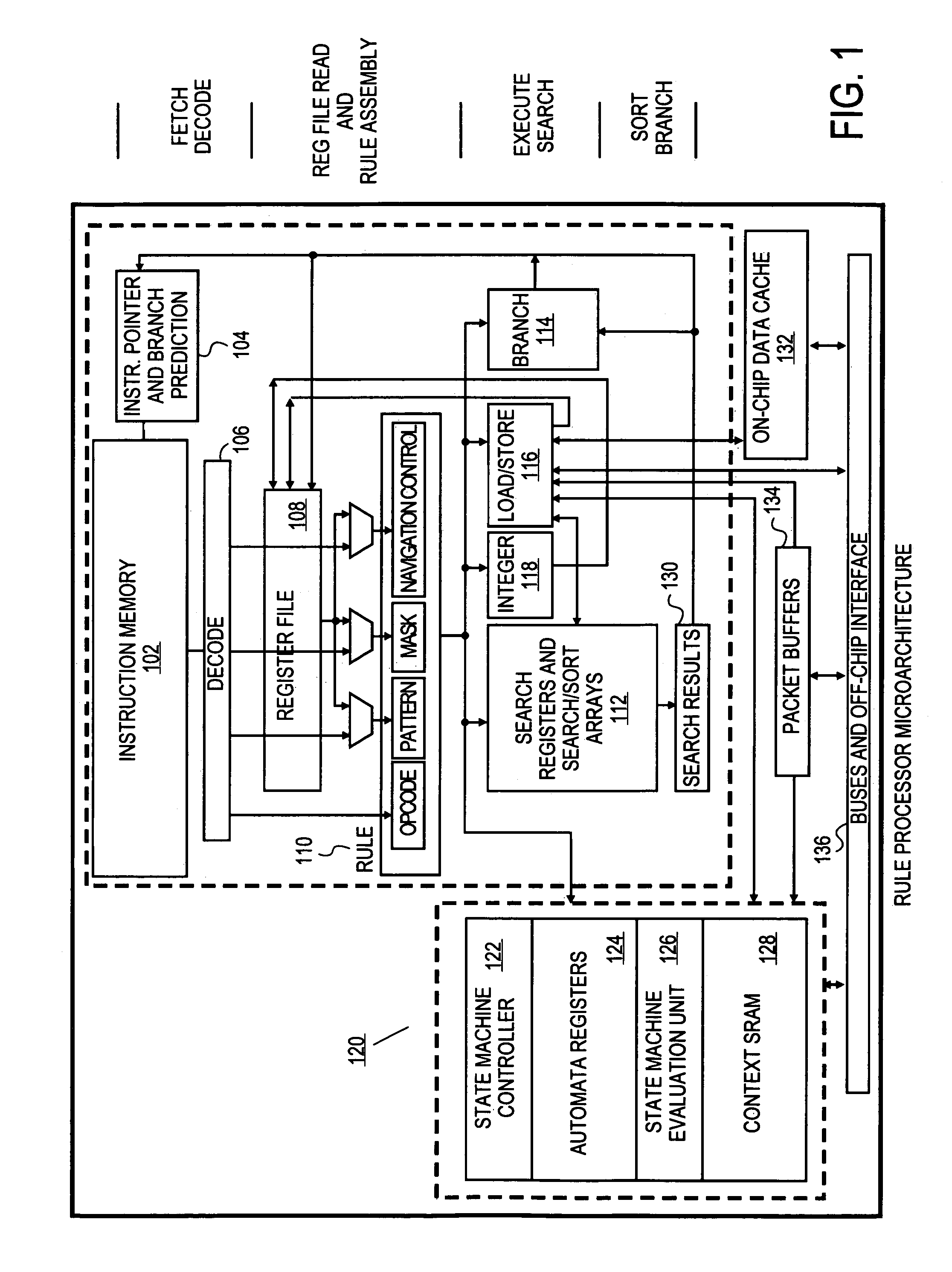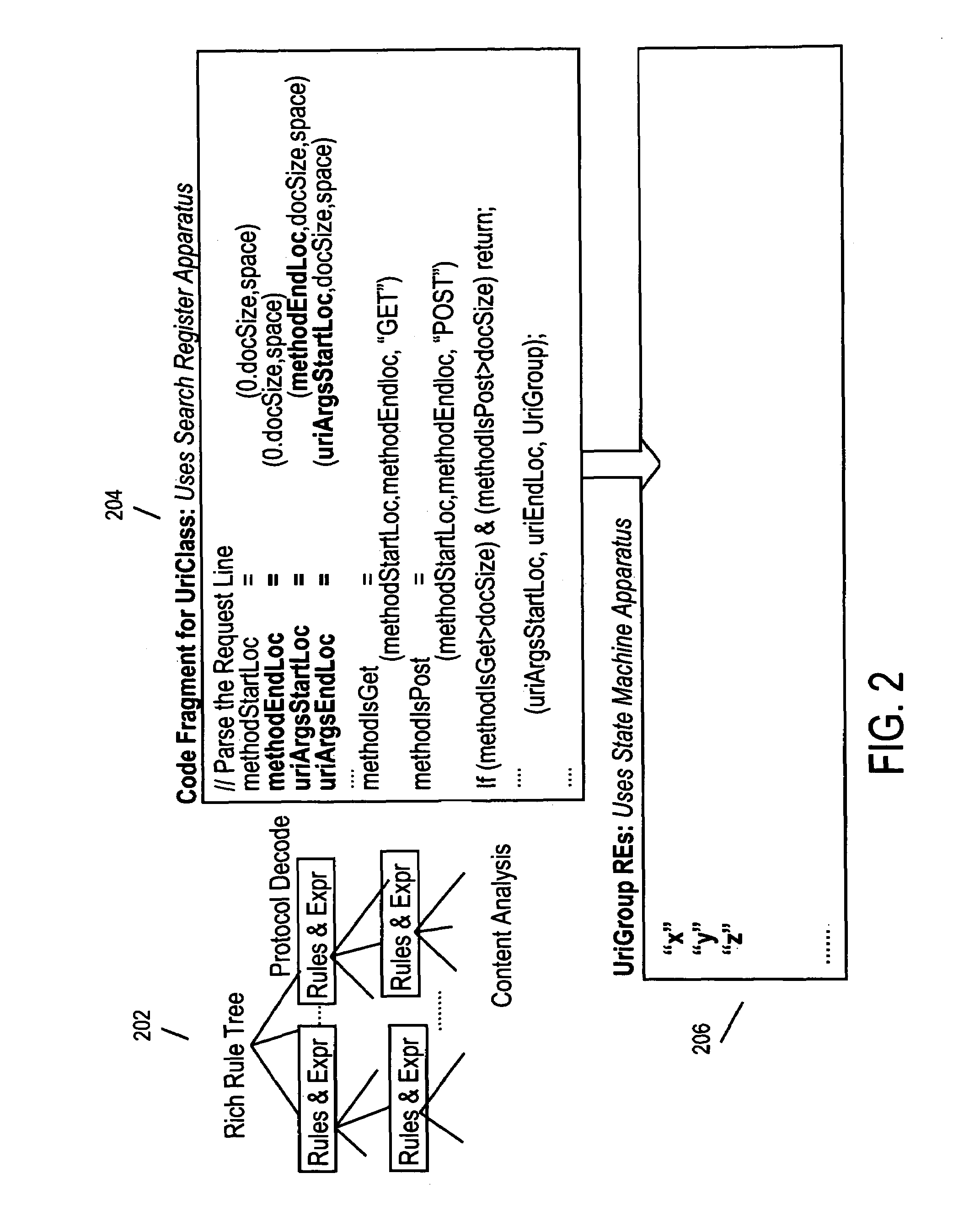Programmable processor apparatus integrating dedicated search registers and dedicated state machine registers with associated execution hardware to support rapid application of rulesets to data
a programable processor and data technology, applied in the field of information processing, can solve the problems of increasing the speed at which the content inspection function needs to be performed, requiring computational complexity, and requiring new vulnerabilities
- Summary
- Abstract
- Description
- Claims
- Application Information
AI Technical Summary
Benefits of technology
Problems solved by technology
Method used
Image
Examples
Embodiment Construction
[0045]A programmable rule processor apparatus integrating dedicated search registers and dedicated state machine registers with execution hardware to support rapid application of rulesets and grammars to data is described. Such a processor may be used for content analysis and searches. In one embodiment, the programmable rule processor includes portions or apparatus typically found in a general purpose processor along with search registers coupled with a search / parse execution array and also state machine registers coupled with state machine evaluation units. The portions of a general purpose processor may includes the use of an instruction (or rule) memory, instruction pointer and instruction sequencer, as well as a decoder and general purpose register file. Other portions may be used and will be described in more detail below.
[0046]In one embodiment, the search registers store data or content in an array and the general purpose processor front end presents rules to the array for e...
PUM
 Login to View More
Login to View More Abstract
Description
Claims
Application Information
 Login to View More
Login to View More - R&D
- Intellectual Property
- Life Sciences
- Materials
- Tech Scout
- Unparalleled Data Quality
- Higher Quality Content
- 60% Fewer Hallucinations
Browse by: Latest US Patents, China's latest patents, Technical Efficacy Thesaurus, Application Domain, Technology Topic, Popular Technical Reports.
© 2025 PatSnap. All rights reserved.Legal|Privacy policy|Modern Slavery Act Transparency Statement|Sitemap|About US| Contact US: help@patsnap.com



